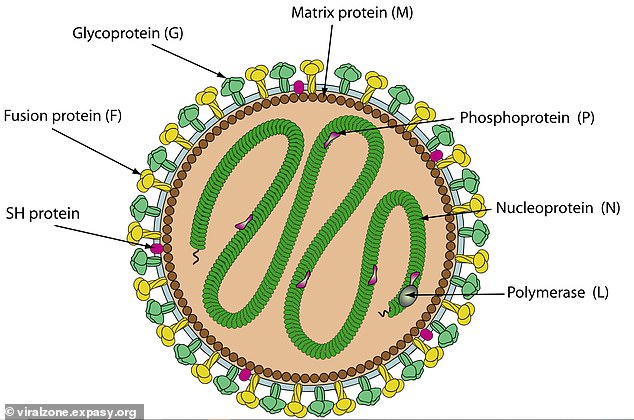Brand new virus with potential to infect humans discovered in Florida rodent
A never-before-seen virus has been discovered in Florida that could pose a threat to humans.
The pathogen belongs to the same family of viruses that cause measles and mumps and was discovered by a researcher under bizarre circumstances.
Dr. John Lednicky’s pet cat Pepper dropped the common cotton mouse at his feet and, being a molecular biologist, he decided to bring it to his laboratory for further research.
He discovered a brand new type of jeilong virus that had evolved from more common strains found in Africa, Asia and South America. These were previously thought to only infect rodents, but recently they have also been found in bats and cats, which the study authors say suggests these have the ability to jump to other species, such as humans.
Researchers still don’t understand whether this virus makes people sick, but say jeilung viruses have occasionally caused severe respiratory illness — with cough, fever and difficulty breathing — in people. They are not known to be fatal.
Dr. Lednicky, a virus expert at the University of Florida who conducted the research, said this new virus: “grows equally well in cells of rodents, humans, and non-human primates (monkeys), making it a great candidate for a spillover event.”
This was surprising and raises questions about what other diseases these animals might carry into our homes, says Emily DeRuyter, a PhD student on the research team.
A short-haired black cat named Pepper dropped the rodent in which researchers found the new virus at Dr.’s feet. Lednicky. The virus expert was originally looking for signs of mule deer pox, a virus that is fatal in deer, in the mouse, and was surprised when he discovered the new class of jeilung virus

Jeilong viruses were discovered relatively recently, so researchers still don’t know how these pathogens work and whether they would make people seriously ill. They belong to the same family of viruses that cause respiratory diseases. The virus depicted is not the same strain as the one found in Florida
DeRuyter added, “We were not expecting such a virus, and the discovery reflects the realization that many viruses we don’t know about are circulating in animals that live near humans.”
These insects belong to the same family as the viruses that cause measles, mumps and many respiratory flu. The researchers named their new virus Gainesville rodent jeilong virus 1 (GRJV1) in their paper, published in the magazine Pathogens.
When they isolated the jeilong virus, they found that it could be activated in samples of both monkey and human cells, suggesting that the disease could evolve in the future to infect humans who come into contact with feces from an infected rodent.
Dr. However, Lednicky said people shouldn’t worry about their new discovery.
Even if the virus can spread to humans, researchers aren’t sure how serious the disease would be — and suggest it might actually be a respiratory disease, unlike other, deadlier rodent viruses.
Additionally, Dr. Lednicky said that there are already viruses that humans can contract from mouse droppings, and it is rare for people to become infected with them, especially since most people do not often come into contact with the infected feces of these wild mice.
The cotton mouse is a species of mouse native to the swamps, forests, fields, and dunes of the southeastern United States.
It is sometimes found in homes from Texas to Florida to Virginia, but more often they live outdoors.
They looked at an example of another group of rodent viruses, which, while fatal in 36 percent of cases, only affect about 30 Americans per year, called hantaviruses.
These insects cause nausea, cramps and fever. Four and four Americans died from hantaviruses in July.
Fortunately, Pepper, the short-haired black cat who started the investigation, showed no signs of illness after handling the infected rodent.
